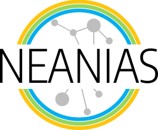The Atmosphere services with which you can work with the NEANIAS experts at the Open Call offers solutions in (i) atmospheric forecast, (ii) calculation of flux densities, (iii) correlation between gas emission, atmospheric conditions and earthquakes and (iv) reconstruction of stress trajectories map.
These are the Atmosphere services with which you can work with the NEANIAS experts at the NEANIAS Open Call:
ATMO-4CAST: "Atmospheric Forecast"
The ATMO-4CAST service allows the generation of meteorological forecasts by using the Weather Research and Forecast Model. For this forecast computation, it is expected that the users provide relevant meteorological data. An example of such an input file is provided in the service web page. The service results are files, downloadable in different formats for a more custom analysis and PDF files for a preliminary graphical visualisation.
ATMO-FLUD: "Calculation of Flux Densities"
ATM0-FLUD provides a set of algorithms for the calculation of flux densities of Sensible Heat, Latent Heat, Turbulent Kinetic Energy and other scalars like GHGs. The input data to the service is user provided although test data are available for trial runs. Real data should be experimentally obtained by the user bearing in mind that the fundamental method employed in this service is the “Eddy Covariance”.
ATMO-SEISM: "Service for correlation between gas emission, atmospheric conditions and earthquakes"
ATMO-SEISM is a service for scientists to design, develop and test the correlation between gas measurements, atmospheric conditions and earthquake data. The considered earthquake parameters are: the earthquake Magnitude, the distance between the hypocentre and the gas emission site, and data and time of the seismic event. This service is focused especially on radon, but it could be possibly used also for other gases emitted in volcanic areas, like SO2 and CO2. The language that is used is Python, one of the most popular languages in data science. Jupyter Hub is a multi-user development environment using the IPython interface, allowing code implementation and interpretation using a web interface.
ATMO-STRESS: "Service for reconstruction of stress trajectories map"
ATMO-STRESS shows regional trends on 2-D gridded map (x-y plane) and can reconstruct a paleostress trajectory map by implementing the following two different methods (Lee and Angelier, 1993): (i) polynomial and (ii) distance weighted interpolation. It represents an upgrade of the already existing "Lissage" program (Lee and Angelier, 1994), which presented several limitations: it has been written using the Turbo C language, it is not user-friendly, it does not consider different data sources, and it cannot manage a large amount of data. All these issues are overcome thanks to ATMO-STRESS service, which also allows to download output maps in formats compatible with GIS environments (e.g. shp, kml).
Learn all the details at NEANIAS Atmosphere services.
